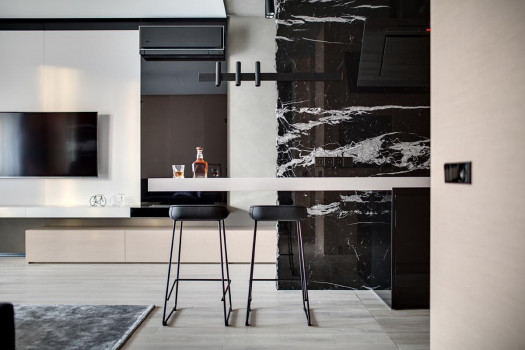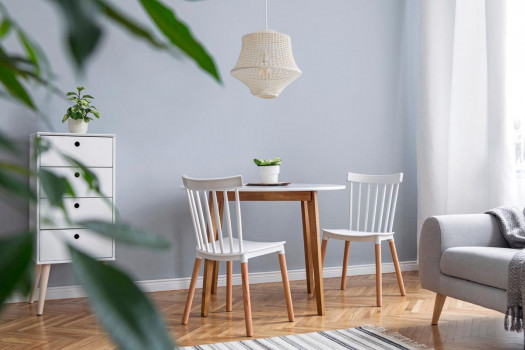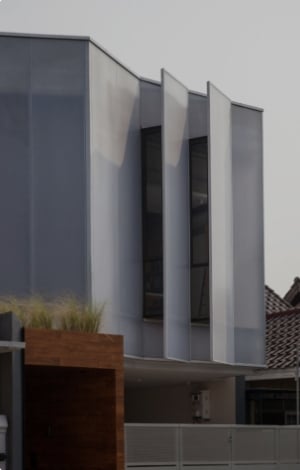Guma Sylvester Makajil




GUMA SYLVESTER MAKAJIL
Guma Sylvester Makajil, an architectural designer hailing from Sabah, has a design philosophy that is grounded in a humble, down-to-earth approach, focusing on simplicity and practicality while utilising natural materials and innovative architectural concepts. He advocates that this way of designing and building should be accessible to everyone, regardless of background, ethnicity and culture. Construction Plus Asia talks to Guma to find out if humble building materials, such as bamboo, necessarily contribute to low-cost construction and projects.

During a forum at ARCHIDEX 2024, you emphasised the essential role of craftsmen or skilled labour in bamboo-related construction. How does this aspect add to the material’s price tag?
Such craftsmen possess the expertise essential for executing detailed and intricate joineries, making informed judgements on the best approaches to bamboo construction. Working with bamboo requires specialised skills to ensure both structural integrity and a high-quality finish. Moreover, designers with expertise in both construction and the design of efficient bamboo structures are notably rare. As such, the use of skilled labour in bamboo construction may contribute to increased overall costs, as these craftsmen and designers bring valuable knowledge and experience to projects.
Your design philosophy focuses on simplicity and practicality. How does your interest in wood (Japanese carpentry) and then bamboo fit into this picture?
A few years ago, before venturing into architecture, I worked as a freelance carpenter, crafting custom furniture from hardwood, and building enclosures for pets and animals. The skills, craftsmanship and attention to detail that I’ve developed in woodworking have significantly influenced my approach to working with bamboo. Japanese carpentry emphasises precision, efficiency and the art of making, which shapes my mindset as I explore new materials. I found that bamboo has its own aesthetic—simple yet warm.
Do you consider bamboo an affordable construction solution in the local context compared to other materials in terms of cost, time, labour intensity and sustainability?
I consider bamboo an affordable and competitive construction solution when it is designed, sourced and managed meticulously. Like any material, its cost-effectiveness depends on proper planning, design and execution. While bamboo may take slightly longer to process as it has been under-appreciated in the local design and construction industry, increased expertise and streamlined methods can enhance efficiency. In terms of sustainability, bamboo has great potential. As a fast-growing giant grass, it can be continuously harvested from the same culm through effective management and harvesting rotation, making it a highly renewable and eco-friendly material.
I’m noticing that bamboo is gradually gaining popularity and the industry is increasingly recognising this material as more research into local bamboo varieties is conducted, although engineering standards still need to be established. In East Malaysia, there is much interest in bamboo, with the local government investing heavily in bamboo planting and production, which has the potential to offset the use of timber and possibly steel.

Do you find yourself actively utilising affordable construction solutions in your designs? If yes, what are some cost-effective applications/ideas that are particularly meaningful to you?
Yes, I want to challenge myself to continually explore new materials that are both cost-effective and eco-friendly, such as plastic boards made of recycled beverage cartons and reclaimed timber. I’m also interested in techniques like rammed earth and possibly 3D printing, if I can find a cost-effective way to implement it. Moreover, I believe that architectural and construction materials can provide socio-economic benefits to local settlements. For instance, the Orang Asli, a heterogeneous indigenous population that forms a national minority in Malaysia,1 benefited from harvesting bamboo for the Rumah Baca Orang Asli project. Therefore, it is not just about the material itself, but also the narrative and positive impact it brings to local communities.
You just mentioned the Rumah Baca Orang Asli project in which you participated. What factors influenced the decision to use bamboo as the primary construction material in this project?
In the Rumah Baca Orang Asli project, bamboo was chosen as the primary material to reflect the vernacular essence of the structure as well as to align with the architectural typology and cultural context of the Orang Asli.

The bamboo structure serves as both a school and a community centre.

Guma worked with a small team to complete the structure in just three weeks.
The Rumah Baca Orang Asli project is located in the Rainforest of Royal Belum, among the Jahai people of Perak, who traditionally live as hunter-gatherers. Modern influences have led them to seek economic adaptation, making education vital for the younger generation. In Kg. Klewang, Royal Belum, the community lacks a dedicated learning space, highlighting the need for a rumah baca—a reading house serving as both a school and a multipurpose community centre.
Bamboo was chosen as the primary material to reflect the vernacular essence of the structure as well as to align with the architectural typology and cultural context of the Orang Asli. The material’s abundance in the local area addresses maintenance concerns as well. Moreover, the properties of bamboo make it especially suitable for the region’s unpredictable weather, including strong winds and occasional floods. Thus, bamboo was used since it is both flexible and rigid.
In terms of design, the project features geometric bamboo construction, ensuring strength and weather resistance while respecting the cultural design language of the Orang Asli. The custom bamboo system enabled rapid assembly, allowing the structure to be completed in just three weeks with a small team. This system also enhances bamboo’s tension and compression strength for long-term stability.
Can you elaborate on the custom bamboo system used for rapid assembly in this project, as well as its cost effectiveness compared to traditional building methods?
This custom, versatile bamboo system modernises traditional bamboo joinery by utilising a simple bolt-and-nut connection, enhanced by metal accessories/adapters at the ends of the poles. It enables the connection of two or more bamboo poles at various angles, accommodating different diameters. This system aims to enable general contractors and even volunteers who are not familiar with bamboo to work with the material easily.
Although implementing this bamboo system may be slightly more expensive than using standard round poles, its flexibility and versatility outweigh the cost disadvantages. This approach allows us to construct a structure with minimal manpower and reduced construction time.

The custom bamboo system utilises a simple bolt-and-nut connection.

The system enhances bamboo’s tension and compression strength for long-term stability.

Bamboo’s properties make it ideal for the region’s unpredictable weather.
PROJECT DATA
Project Name
Rumah Baca Orang Asli
Location
Kg. Klewang, Royal Belum State Park, Malaysia
Completion Date
January 2024
Gross Floor Area
75 square metres
Building Height
Single storey
Client/Owner/Developer
Perak State Parks Corporation
Grant Provider
Embassy of the Federal Republic of Germany
Main Coordinator
Hope For Malayan Tigers (RIMAU)
Project Coordinator
Veritas
Architecture Firm; Main Contractor
SEAD Industries Sdn Bhd
Principal Designer
Guma Sylvester Makajil
Images
Guma Sylvester Makajil
In this Japanese restaurant project, we implemented several key strategies to ensure cost-effective construction, including pre-coating the bamboo in a workshop and properly treating it to reduce future maintenance costs.

The project combined various materials to create a Japanese wabi-sabi aesthetic.
What is the design approach behind using bamboo in the Ichi-U Japanese Restaurant project, located adjacent to a luxury hotel? How did the use of this material contribute to a cost-effective construction in the urban context?
The Ichi- U Japanese Restaurant project features a blend of materials—wood, stone, bamboo and washi paper— highlighting their natural patterns and textures to create a wabi-sabi aesthetic. Since the client requested a very high standard of finish suitable for a luxury hotel context, we adopted a different approach compared to the Rumah Baca project, where speed, ease of construction and innovation were prioritised. Here, we combined various materials not through rigid structures, but through an organic interplay of tension and balance, held together by delicate yet strong traditional weaving.
Bamboo was chosen for its cultural significance in Japanese tradition, particularly in tea houses, gardens and shrines, aligning well with the restaurant’s theme. We have specifically incorporated bamboo elements consistently and subtly alongside modern features throughout the restaurant. This combination creates an experience that honours Japanese reverence for bamboo while embodying the craftsmanship and skills resonant with Japanese quality, set in the heart of Kuala Lumpur.
Furthermore, we prioritised the quality of the bamboo and craftsmanship, aiming to elevate the material by using high-quality bamboo while ensuring affordability, blending it with contemporary design. Notably, the team I assembled for the bamboo interior consisted of only three Orang Asli craftsmen. Given the small team size, we relied on careful planning and efficiency in our bamboo expertise to keep the project cost-effective while delivering a refined, high-quality result.
In this project, we implemented several key strategies to ensure cost-effective construction, including pre-coating the bamboo in a workshop and properly treating it to reduce future maintenance costs. Additionally, the efficiency and expertise of our team were vital in meeting strict deadlines without any delays that could have increased project costs.
Reference:
https://en.wikipedia.org/wiki/Orang_Asli









 Indonesia
Indonesia
 Australia
Australia
 New Zealand
New Zealand
 Philippines
Philippines
 Hongkong
Hongkong
 Malaysia
Malaysia






